|
|
|
Monday, May 13th, 2019
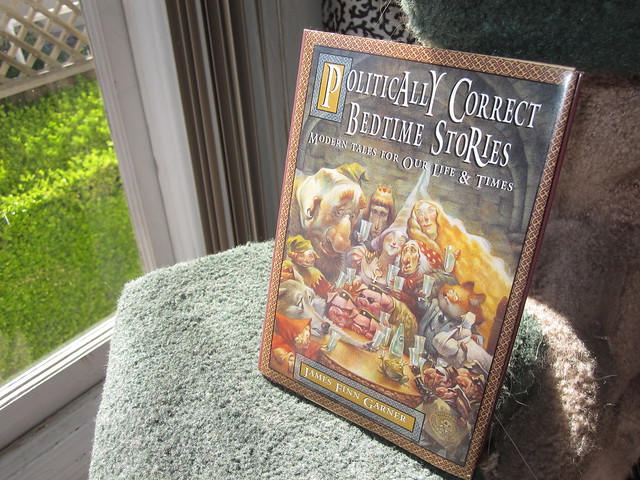
Poking through 12+ years of posts I find information that’s as useful now as when it was written.
Golden Oldies is a collection of the most relevant and timeless posts during that time.
While politically correct has made a lot of noise since its rise in the media, it hasn’t made any real difference. Join me tomorrow for a look at the problem with many progressives and why it will undermine many of the changes they champion.
Read other Golden Oldies here.
I sent an article about the “frat house” (AKA, sexist) culture prevalent in ZocDoc’s sales department to “Kevin”, a good friend who works in sales.
While agreeing about problematic sales cultures, he had a different take on culture in general.
His viewpoint, from someone who has been there/done that, may not be socially acceptable and could probably get him in trouble if posted on social media, but I can share it here — anonymously
Whether you’re a nigger or a bitch, this is the shit you have to deal with. I prefer environments where it’s obvious what the culture is, like this, than politically correct cultures where bigotry is the norm, but you never know for sure why you didn’t get the bonus, promotion or accolade with superior performance. Screw political correctness!
I believe it’s important to know where you stand, because then you can make informed choices. Give me this culture anytime – when I enter, I will know what the rules are. If I stay, it’s to accomplish a particular personal goal. When I leave (if not immediately), I will know why I stayed, left, and what I gained. I’m richer, they are poorer.
There is no such thing as “politically correct”. The term itself is an oxymoron that implies consensus building, popular sentiment or sinister machinations. Politics is about popularity — we never let others know where we stand or what we stand for in order to win a popularity contest. It is giving in to the tyranny of the mob, not daring to have unpopular opinions or stances, because one will not be popular.
Being a black man, I prefer a racist that’s honest about who he is and what he is. I prefer working for such a person because I know what to expect. I presume it would be the same for you as a woman regarding sexists. These days no one is a racist, we just have “unconscious biases” that prevent us from taking unpopular positions and that ensure that the powerful can continue to exclude the less powerful.
Politically correct environments rob me of information, choice, and the ability to navigate astutely to attain my objectives.
I agree with Kevin, even in those instances where bias has its basis in neuroscience, it’s better to know.
Flickr image credit: Zaskoda:
Posted in Communication, Culture, Ethics, Golden Oldies | No Comments »
Monday, February 18th, 2019
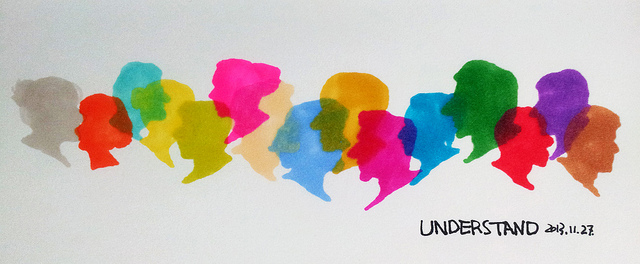
Poking through 12+ years of posts I find information that’s as useful now as when it was written.
Golden Oldies is a collection of the most relevant and timeless posts during that time.
You might think that stuff would change in 11 years and you would be correct if you were talking about technology, food, or similar topics. But when the subject is people, not so much.
Accents can be just as much a challenge today as they were when I wrote this and before. The difference 11 years have made is that while there is greater acceptance of diverse accents the need for understanding them hasn’t changed.
Nor has the solution described in this post. If anything, its importance has significantly increased.
Read other Golden Oldies here.
The ability to communicate successfully, in both directions, is the mark of a great manager, as is building and managing a powerful and innovative organization.
Accomplishing this mandates a willingness to hire the best available people.
But what do you do when the best can’t be easily understood?
Accents, whether from overseas or US regional, are a major turnoff to many people. Reactions range from idiotic assumptions of incompetence (essentially subconscious prejudice) to annoyance for having to exert effort listening (sheer laziness).
In a diverse world of shrinking talent pools, where English is a second language for many, it’s bad business to pass on those candidates, but it’s also ridiculous to believe that the problem will fix itself or just fade away if you ignore it.
I’m not talking about the need for flawless English, but about recognizing what happens if they aren’t understood.
What can you, as a manager, do?
If the challenge is accent (whether from India, China, New York, Liverpool, Mississippi, etc.), rather than comprehension or language knowledge, that could minimize their contribution or effectiveness, what do you do?
The same solution you use for any good candidate who is lacking a particular skill, you offer training. In this case, accent reduction training.
Again, not to force them to sound like you, but to improve their speech enough to ensure a reasonable level of understanding.
Yes, the discussion and offer needs to be handled with sensitivity, but people aren’t stupid and they know the things that put them at a disadvantage in the workplace. What you are offering to do is pay for training that will give them a boost throughout their career, not just at your company.
The cost isn’t that great, either, the company profiled in the article charges around $1000 per person. In comparison to the cost-per-day of continuing the search, $1000 doesn’t even qualify as a peanut.
Plus, there is additional ROI to you, individually, and to your company.
- You acquire top talent with a high degree of loyalty, while building a reputation as a creative manager, who knows how to successfully staff outside the box, is willing to invest in people, and has the vision to see beyond the obvious.
- Your company strengthens its diversity, which typically improves innovation, while your management achievements have an external halo effect on the company.
Image credit: 마 법사
Posted in Communication, Culture, Hiring, Motivation, Retention | No Comments »
Monday, November 12th, 2018

Poking through 11+ years of posts I find information that’s as useful now as when it was written.
Golden Oldies is a collection of the most relevant and timeless posts during that time.
This story about Slack is from 2015.
Any company that follows in Slack’s shoes still warrants major media coverage.
Sad, isn’t it.
Read other Golden Oldies here.
A Friday series exploring Startups and the people who make them go. Read all If the Shoe Fits posts here
Being a woman in tech can be a serious drawback in 2015; far more so than in the 1980s and 90s — Tinder even dumped a woman founder on the basis that the company wouldn’t be taken seriously by investors. Sadly, they may have been right.
Leave it to Slack, valued at $2.8 billion, to do things differently.
According to its diversity report released on Wednesday, 45% of all Slack managers are female, with 41% of the entire workforce having a woman as their manager. “This means that 41% of our people report to a woman who helps set their priorities, measure their performance, mentor them in their work, and who make recommendations that will impact their compensation and career growth.” In non-engineering positions, 51% of the workforce turned out to be female. Out of the roughly 250 employees worldwide, 39% are reported to be female.
Slack is considered the fastest growing software company in history and they certainly lead the tech pack In gender diversity.
And while their racial diversity stats are as dismal as the rest of tech they are far more actively working on changing that, too.
Here are the company’s four hiring guidelines,
- Examining all decisions regarding hiring/recruiting, promotion, compensation, employee recognition and management structure to ensure that we are not inadvertently advantaging one group over another.
- Working with expert advisors and employees to build fair and inclusive processes for employee retention, such as effective management education, company-wide unconscious bias training, ally skills coaching, and compensation review.
- Helping to address the pipeline issue with financial contributions to organizations whose mission is to educate and equip underrepresented groups with relevant technical skills (like Hack the Hood and Grace Hopper), as well as supporting a variety of internship programs to broaden access to opportunity (like CODE2040).
- Attempting to be conscious and deliberate in our decision-making and the principles and values by which we operate. Changing our industry starts by building a workplace that is welcoming to all so that a generation of role models, examples and mentors is created.
Slack is practicing what recent studies have proven; hiring women pays.
Give that some thought the next time your unconscious bias kicks in leading you to reject a candidate because she is a she.
Image credit: HikingArtist
Posted in Compensation, Culture, Golden Oldies | No Comments »
Tuesday, October 16th, 2018

Last year I had an argument over lunch with a woman friend who insisted that women in tech, especially in Silicon Valley, don’t face the same kind of difficulties career-wise that other women do.
She based her argument on the successful technical careers of a number of women friends and she became increasingly an4gry when I kept disagreeing with her.
I didn’t realize until several days later that we were both right.
Her friends did indeed build successful tech careers during the 1970s and 80s — predating the dot com era.
I, however, was focused on post dot com attitudes in the wake of the rise of bro culture.
Anyone around tech these days either recognizes the bias against women or lives in deep denial.
The latter apparently includes the editors in charge of Wikipedia, who didn’t think much of Donna Strickland’s work.
Prior to winning the Nobel Prize, Strickland’s only previous mention on Wikipedia was in an article about Gérard Mourou, her male co-inventor. On May 23, a Wikipedia editor rejected a draft of an article about Strickland, claiming that it failed to “show significant coverage (not just passing mentions) about the subject.” The rejected draft noted that she was at that time the associate chair of the physics department at Waterloo, and a past president of the Optical Society.
Not surprising when you consider that 90% of Wikipedia editors are young, college-educated males. Not a group exactly known for their pro-diversity stance.
As for Waterloo, Strickland says she never applied for a full professorship, but one has to wonder why the school didn’t notice her work.
Of course, if one is going to choose who notices their work, most would prefer the Nobel Committee to the editors of Wikipedia.
After the Prize was announced, Wikipedia finally created an article about Strickland.
But in what seems like an effort to disparage her accomplishment those same editors added a “personal life” section to her page.
Strickland is married to Douglas Dykaar, also a physicist.[7] They have two children.[7]
Information that is conspicuously absent from her male co-winner’s page.
Finally, the video on Strickland’s page talks about a childhood trip to a science fair, while Mourou’s features his post award speech.
How’s that for bias?
Image credit: Susan Young
Posted in Culture, Innovation | No Comments »
Tuesday, September 11th, 2018

KG Charles-Harris sent me an article about WeWork-as-a-cult, which prompted yesterday’s Oldie.
This post isn’t about WeWork, but about two things that struck me.
First, the pure adoration shown to Adam Neumann and the absolute blind following of all he preaches reeks of Jim Jones only with a far larger world vision.
The second were the words uttered by Neumann’s wife Rebekah at the recent Tunbridge Wells Summer Camp.
“A big part of being a woman is to help men [like Adam] manifest their calling in life.”
Shades of Phyllis Schlafly.
And here I thought the fight, from gender equity to #metoo was so women could pursue their own, independent manifest destiny.
Silly me.
All this is even more disturbing, since the great majority of both WeWork employees and devotees are Millennials.
Image credit: Yankech gary
Posted in Communication, Culture, Ducks In A Row | No Comments »
Monday, September 10th, 2018
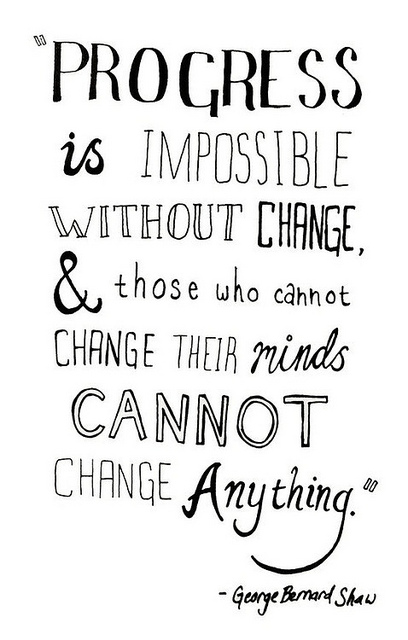
Poking through 11+ years of posts I find information that’s as useful now as when it was written.
Golden Oldies is a collection of the most relevant and timeless posts during that time.
I wrote this back in 2014. Obviously, I didn’t mention harassment because the post focused on what was in the news, and it wasn’t talked about all that openly, unlike now.
Sadly, nothing has changed. It’s still news and people are surprised.
Read other Golden Oldies here.
I get it. I get what’s going on in terms of women in the workplace is news.
I get it that it is important to remind people that for all the progress that’s been made some things haven’t changed.
It’s still assumed that it’s OK to ask professional women, such as lawyers and marketing execs, to do stuff that would never be asked of the men in the organization.
“…plan parties, order food, take notes in meetings and join thankless committees…bring cupcakes for a colleague’s birthday, order sandwiches for office lunches and answer phones”
By the same token, it’s news that board diversity is moving at glacial speed, primarily because boards only want people with experience and to have experience they need to serve on a board.
“Recruiting women and minorities to boards is being slowed because of boards’ unwillingness to look at candidates who have not yet served on boards,” said Ron Lumbra, co-leader of the CEO and board services practice for Russell Reynolds. “There’s a premium on experience.’’
So while I have no problem with these subjects being presented over and over in the news, there is one thing I don’t understand.
Why are so many people surprised by the information?
Is the general population so naïve that they actually believe women are no longer asked to do tasks that are closer to house work than business work?
Do they really believe that the lack of board diversity is a function of the lack of experience as opposed a desire to spend time with people like themselves who are well within their comfort zones?
The sad part is that while it’s still news, it’s certainly not a surprise.
Flickr image credit: Arya Ziai
Posted in Change, Golden Oldies, Leadership | 1 Comment »
Tuesday, August 14th, 2018
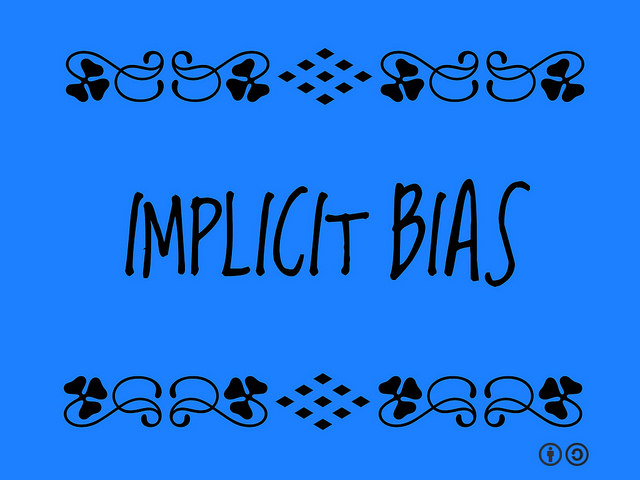
Bias, implicit or not, intentional or not, is at the forefront of most companies and bosses’ minds. Companies spend thousands on various kinds of anti-bias training.
But based on decades of data, not much seems to change.
Perhaps that’s because bias isn’t “fixable” or, as Lily Zheng, a diversity and inclusion consultant, says, Bias isn’t like an upset stomach that an individual can take an antacid to fix.
Zheng offers a truly commonsense approach that is far more practical and achievable than trying to make people unbiased.
The outcome of any implicit bias training shouldn’t be to cure people’s bias or make them more objective—it should be to make people bias-aware. (…) When people are bias-aware, they are able to act with less bias without fixating on being unbiased.
It all boils down to knowing yourself, which can be a lost cause for some people.
More than a decade ago I started talking about MAP (mindset, attitude, philosophy™).
MAP (mindset, attitude, philosophy)™ is the basis for everything you do—it is the why of life.
Everything you do and say is a mindset, grounded in your attitude towards others, which, in turn, is based on your personal philosophy.
Obviously, implicit bias is part of MAP.
Zheng provides a good roadmap for handling implicit bias, focusing on the need for self-honesty and a non-judgmental attitude, including that awareness doesn’t always mean change.
While the decision may not end up changing, the process of being honest and nonjudgmental about one’s own bias adds both accountability and intentionality.
I provided a simple step-by-step for changing your MAP if you so desire.
Both require honest self-awareness, but doing them is, as always, your choice.
Image credit: Ron Mader
Posted in Communication, Culture, Ducks In A Row, Personal Growth | No Comments »
Tuesday, July 24th, 2018

Words are tossed around today with little consideration for their actual meaning, let alone accuracy of usage.
Sometimes it doesn’t matter, but misusing others can be the basis for serious errors, while treating words as interchangeable, as if they are synonyms, can have dire consequences.
This is especially true when the subject is emotionally charged or carries a lot of baggage — such as diversity, the great catch-all.
I can also say that I, too, have used the following incorrectly: privileged, underrepresented, marginalized, diversity, and inclusion.
Let’s take a look at what the words actually mean.
- Privilege is about access.
- Being underrepresented is about numbers.
- Being marginalized is about treatment.
- Diversity is about variety.
- Inclusion, which is about experience—the experience of a person, a group, or a community.
None of these words are interchangeable; each has a complete, stand-alone meaning in and of itself.
Companies are famous for signage promoting their values, mission, etc.
Perhaps the time has come for a new one based on the true definition of these five words.
The poster covers talk.
However, the talk is worthless unless it is partnered with the walk.
Exactly like diversity and inclusion — the first means nothing without the second.
Image credit: TEDx NJLibraries
Posted in Communication, Culture, Ducks In A Row, Motivation | No Comments »
Tuesday, July 17th, 2018
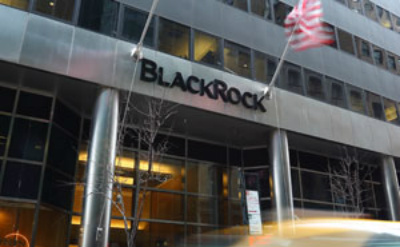
Lots of good external reading today.
At every level, some of the toughest, most hard-headed, business people work for Blackrock; not surprising, since it is the world’s largest asset management firm, with more than $7 trillion under management.
That’s large enough to get most financial markets to sit up and take notice when it speaks — and speak it did early this year.
Larry Fink recently created a shockwave. As cofounder, chairman, and CEO of BlackRock, one of the world’s largest global asset management firms, in an open letter to CEOs he caught the attention of financial markets and beyond by insisting on the importance of companies serving a social as well as financial purpose.
The idea that corporations have a social responsibility to a much larger audience than their investors are heresy in the financial world.
But Fink can’t be ignored as a liberal do-gooder, especially when he backs his comments with hard data.
This was followed up a few months later by Jonathan McBride, managing director and global head of inclusion and diversity at BlackRock.
Blackrock hit the nail on the head with McBride’s title — not ‘diversity,” but diversity and inclusion.
Hiring a diverse workforce is actually the easy part, because there is a multitude of talented candidates available once you knock down bias, unconscious or not, laziness, and trying to substitute apps and AI, which carries the same bias as it’s creators, for human thought.
Changing attitudes so those hired are included, developed and utilized is the hard part.
Recently, the company distributed a booklet called BlackRock at Our Best: The Power of Diversity that captured the diversity and inclusion guidance that the company had been providing to its managers for about a year and a half. He said it was placed on every U.S. employees’ seat on International Women’s Day (March 8), which was also the last day of an extended company “jam.”
The booklet included research findings about diversity in business, which McBride describes as “a key unlock” for getting people on board. He said it shifts the burden of proof away from the individual person arguing for diversity, where it traditionally has been. Having hard data, he said, helps managers respond to questions such as “So has diversity ever worked?” or to statements implying that because a particular employee didn’t do well, diversity must be wrongheaded. And to those suggesting the company is fine as is — if it ain’t broke, why fix it? — you can hit the ball right back over the net. Said McBride: “The data says we can do even better.”
And that is the difference.
When you have hard data, not touchy-feely or do-the-right-thing arguments, and that data provides a proven path to more and better success for both individuals and the company as a whole, people will embrace it.
Keep in mind that diversity and inclusion is a way to improve business results, not a demand that people change their personal values.
People can believe anything they want as long as those beliefs don’t interfere with achieving their company’s objectives.
Image credit: Blackrock
Posted in Communication, Culture, Role Models | No Comments »
Monday, May 7th, 2018
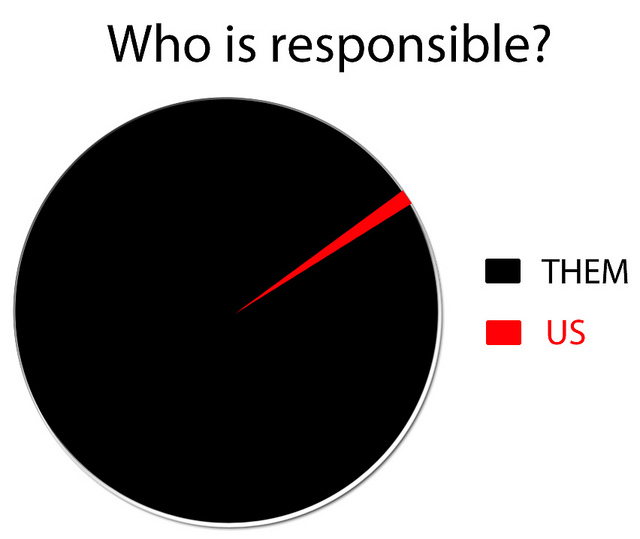
Poking through 11+ years of posts I find information that’s as useful now as when it was written.
Golden Oldies is a collection of the most relevant and timeless posts during that time.
When I wrote this a decade ago it resulted in a comment and my response, which are included today. The reason I included my response is because, in these days of bad examples, lower self-control and less personal responsibility the responsibility of leaders is even greater. As you will see in tomorrow’s post.
Read other Golden Oldies here.
What responsibility?
A lot.
My focus isn’t meant to be just race or gender issues, but on the attitude that I’m/we’re-right-so-you-should-do/think-our-way-or-else. It’s not the ‘we’re right/you’re wrong’ that bothers me, but the ‘do-it-our-way-or-else’ that shows the intolerance for what it really is.
During my adult life (I missed being a Boomer by a hair) I’ve watched as hate and intolerance spread across the country masked by religion, a façade of political correctness or a mea culpa that is supposed to make everything OK, but doesn’t.
Various business, political, religious and community leaders give passionate, fiery talks to their followers and then express surprise and dismay when some of those same followers steal trade secrets, plant bombs, and kill individuals—whose only error was following their own beliefs.
No longer are we all entitled to the pursuit of happiness if our happiness offends someone next door or living at the other end of the country.
I remember Ann Rand saying in an interview that she believed that she had the right to be totally selfish, where upon the interviewer said that would give her freedom to kill. Rand said absolutely not, in fact the reverse was true, since her selfishness couldn’t take away anyone else’s right to be selfish. That about sums up my attitude
I just wish there were fewer followers for all the Ellsworth Toohey types in today’s world.
- Kathy Says:
I don’t know if you can blame abstract entities such as leadership business or religion or politics for the actions of individuals. I’m tempted to put the blame on the person taking the action. There is a big difference between hearing someone talk and acting on the content of the talk. We hear people talk persuasively all the time about the importance of saving for retirement or flossing our teeth or using sunscreen, and many, many people who’ve heard these persuasive speeches do none of the above. So, I’d say, no matter what people are saying to me, in the newspaper, on TV or over coffee, if I take the action, I’m responsible for the result. I always had the choice.
- Miki Saxon Says:
Kathy, I agree that it is the responsibility of followers to think, but we live in an age where many people have opted out of thinking, and merely follow the lead of any person with whom they are comfortable (see the 9 post on followers) For that reason I do hold the leaders, who aren’t abstract, and incite their followers through passionate rhetoric responsible for the outcome. I think they are responsible for the results of their comments.
Image credit: Sean MacEntee
Posted in Golden Oldies, Leadership, Personal Growth | No Comments »
|
 Subscribe to
Subscribe to
MAPping Company Success
About Miki 
Clarify your exec summary, website, etc.
Have a quick question or just want to chat? Feel free to write or call me at 360.335.8054
The 12 Ingredients of a Fillable Req
CheatSheet for InterviewERS
CheatSheet for InterviewEEs™
Give your mind a rest. Here are 4 quick ways to get rid of kinks, break a logjam or juice your creativity!
Creative mousing
Bubblewrap!
Animal innovation
Brain teaser
The latest disaster is here at home; donate to the East Coast recovery efforts now!
Text REDCROSS to 90999 to make a $10 donation or call 00.733.2767. $10 really really does make a difference and you'll never miss it.
And always donate what you can whenever you can
The following accept cash and in-kind donations: Doctors Without Borders, UNICEF, Red Cross, World Food Program, Save the Children
*/
?>About Miki
About KG
Clarify your exec summary, website, marketing collateral, etc.
Have a question or just want to chat @ no cost? Feel free to write
Download useful assistance now.
Entrepreneurs face difficulties that are hard for most people to imagine, let alone understand. You can find anonymous help and connections that do understand at 7 cups of tea.
Crises never end.
$10 really does make a difference and you’ll never miss it,
while $10 a month has exponential power.
Always donate what you can whenever you can.
The following accept cash and in-kind donations:
|















